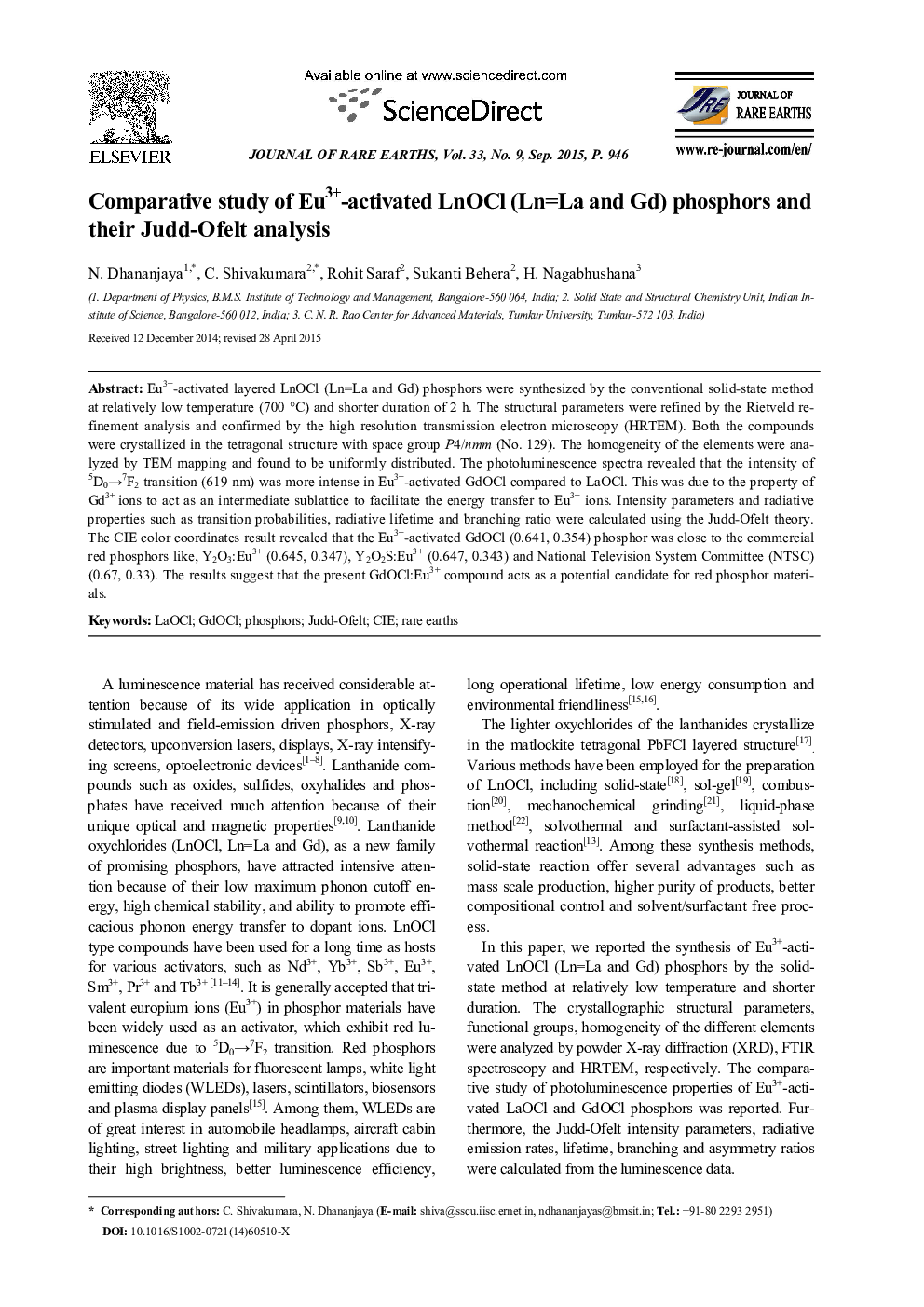| Article ID | Journal | Published Year | Pages | File Type |
|---|---|---|---|---|
| 1259952 | Journal of Rare Earths | 2015 | 8 Pages |
Eu3+-activated layered LnOCl (Ln=La and Gd) phosphors were synthesized by the conventional solid-state method at relatively low temperature (700 °C) and shorter duration of 2 h. The structural parameters were refined by the Rietveld refinement analysis and confirmed by the high resolution transmission electron microscopy (HRTEM). Both the compounds were crystallized in the tetragonal structure with space group P4/nmm (No. 129). The homogeneity of the elements were analyzed by TEM mapping and found to be uniformly distributed. The photoluminescence spectra revealed that the intensity of 5D0→7F2 transition (619 nm) was more intense in Eu3+-activated GdOCl compared to LaOCl. This was due to the property of Gd3+ ions to act as an intermediate sublattice to facilitate the energy transfer to Eu3+ ions. Intensity parameters and radiative properties such as transition probabilities, radiative lifetime and branching ratio were calculated using the Judd-Ofelt theory. The CIE color coordinates result revealed that the Eu3+-activated GdOCl (0.641, 0.354) phosphor was close to the commercial red phosphors like, Y2O3:Eu3+ (0.645, 0.347), Y2O2S:Eu3+ (0.647, 0.343) and National Television System Committee (NTSC) (0.67, 0.33). The results suggest that the present GdOCl:Eu3+ compound acts as a potential candidate for red phosphor materials.
Graphical AbstractCrystal structure of LaOCl, PL spectra and CIE chromaticity diagramFigure optionsDownload full-size imageDownload as PowerPoint slide
